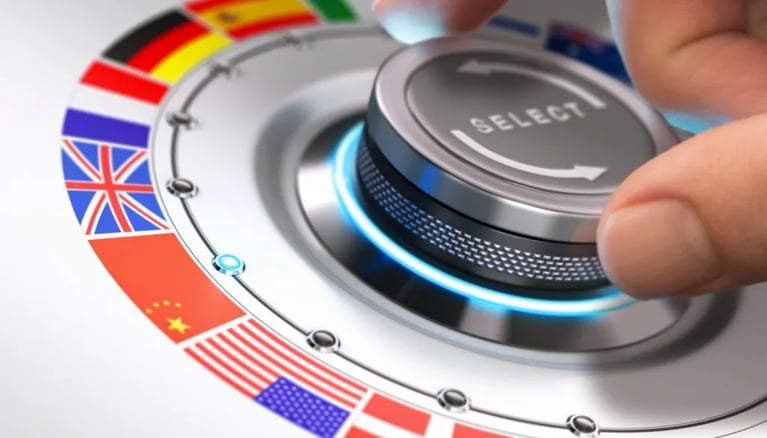Whether you’ve got a blog that caters to readers from different countries or a business with foreign clients, you likely find yourself in need of translations from time to time.
You could leave it up to your readers to translate your material. But if they use an automated online service, they’ll lose much translation. They may even get messages that are confusing or unclear, which can cause you to lose customers.
In rare cases, your poorly translated material could even offend a client.
To keep this from happening, there are a few things you need to know. Keep reading to learn 7 essential tips for translating your materials to and from English.
1. Keep thoughts brief
If you or an employee is writing the content that will eventually be translated into English, this is one small thing you can do that will make a big difference.
Keeping your sentences short will make it easier to translate them. That’s because short sentences often contain only a single thought, with one subject and one action.
When you start adding additional verbs and nouns, translation becomes more difficult. The translated materials become more confusing and less polished.
If you didn’t write the material but can edit it before translation, do so. Keep the individual thoughts and sentences as brief as possible.
2. Set a standard vocabulary
While small differences in the vocabulary from one sentence to the next might not seem like a big deal, when you translate that material to another language, it can change the meaning of the text entirely.
For instance, imagine that you will translate an article about dogs. You might call the dogs puppies, canines, pups, Fido, or any other number of monikers.
The problem is that many of these are slang terms or nicknames. They are only clear when written and read in English.
When you start translating these terms into a different language, they become confusing.
“Pup” might become “puppy,” changing the meaning. “Canine” could get translated to the name of a different member of the canine family, like wolves.
“Fido” is a name so that it would be left the same. Readers of other languages would have no context for this name; they may have no idea that in English, that’s a popular nickname for dogs.
The same goes for a sentence in another language that you translate into an English sentence.
3. Skip the jokes
Just as certain words may not translate smoothly from one language to the next, humor and sarcasm often get lost or confused.
In some cases, what sounds like a joke could even get translated into something offensive.
If you can edit the content that you’re planning to translate, get rid of the jokes. Or, take the time to let a speaker who understands both languages go through and adjust the content so that the jokes make sense in the translation.
4. Understand the language and cultural differences
Jokes aren’t the only things that can get lost in translation.
Cliches are also tough to translate and will likely lose their meaning and, instead, sound odd or out of place to your native readers.
Some words may not even have direct translations, or they translate to words that don’t mean the same thing. For instance, in English, the words “pastry,” “cake mix,” and “batter” all mean different things. But in Portuguese, all three words translate to one term, “massa.”
When translating from Portuguese to English, a phrase that was intended to mean that someone was eating a pastry could turn into someone eating cake batter.
While this may not seem like a big issue, differences like this can change the entire meaning of a piece of content.
5. Make it active
Passive voice, or voice that describes events that have already happened doesn’t always translate correctly between languages.
Because many languages treat passive voice differently, the meaning of your words could change once translated.
To avoid this, try to always keep your voice active in the original content.
6. Get your dates right
In American English, we write our dates so that the month comes first, followed by the day, and ending with the year.
This is true when you write out a date, like October 2, 2018, and when we abbreviate dates, like 10-2-18.
But in other languages, this same order is not used.
Many countries and languages throughout the world write the day first, followed by the month, and then the year. So the abbreviated date above, 10-2-18, would actually be February 10, 2018.
When dates are written out, the day is still listed first, and the comma is dropped, like 2 October 2018.
7. Check your spacing
When you’re translating content for the web or for print, it’s important to check your spacing and layout before you print or publish it.
Simply translating your content and repasting it in the same text box can cause many issues.
Once your content is translated, read through it and adjust your paragraphs and spacing to ensure it looks as good as it did in its original form.
Putting to and from English tips to work
When you need something translated to and from English, keeping these 7 English tips in mind will help ensure that your final product is clear and concise.
But even these tips aren’t enough for just anyone to create a professional translation.
Even if you’re fluent in both languages, translating from one to the other is challenging. It involves understanding how to approach a translation, how to make decisions when certain words don’t translate, and how to structure your newly translated sentences properly.
If you aren’t fluent, you might be tempted to use an online English sentence translator service like Google Translate. This is a big mistake; the service only translates the words, which means the grammar usually gets skewed.






Comments